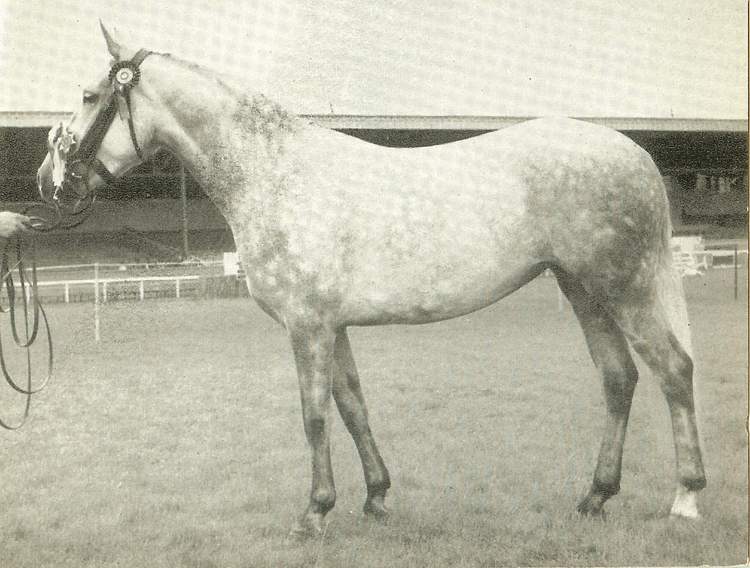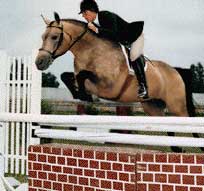

Connemara


Introduction: If you have any comments or suggestions, please click here. I believe the one jumping is a Connemara called Custusha's Cashel Rock.
Names: Connemara, Connemara Pony. Named after the district of Connemara in Ireland where they originated. Sometimes this sturdy little fellow is simply called the Irish pony, and sometimes called Hobbie.
Origin: These ponies have been bred in western Eire,
especially County Galway, for so long that their origins have been lost in
time. They have similar forebears to Highland
ponies, but with an addition of Arabian,
Spanish and Andalusian
blood many centuries ago. It
is possible that these other breeds were introduced by the rich merchants of
Galway City during Ireland's extensive trade with Spain. Another version
has it that Andalusian
and Oriental stallions swam ashore from the wrecks of the
Spanish Armada.
Breeding area and studs--Ireland: Connemara in County
Galway. Widely bred on the mountain sides. In England breeding is
organized by the English Connemara Pony Society. Very old
indigenous breed. Systematically improved by the admixture of Spanish and Arab
blood, and more recently Thoroughbred.
Breeding: A more recent Arabian cross gave added refinement to this attractive breed, without detracting from their natural hardiness inherited by living on the scanty, rough grazing of the Irish bogs and mountainsides. This is an ancient breed, dating back into the thirteenth century or earlier.
Description: In conformation and action, these ponies have the look of miniature Thoroughbreds.
Action: Long, smooth walking stride; they are apt to trot into the ground; able to gallop and jump.
Body: Long, sloping and well-made shoulders. Straight back with good muscles connecting with powerfully muscled sloping quarters. Carries saddle well. Considerable depth through the girth and well-sprung ribs.
Color: Almost every other Connemara is gray, and blacks are frequent. They can also be dun, brown, bay and chestnut. Predominantly grey, but also bay, black and chestnut; duns are very scarce. Sometimes with dorsal stripe.
Head: Well-shaped, very noble.
Legs: Clean, hard and flat with well defined tendons and hocks.
Neck: Long and well set on.
Size: One of the largest ponies at 13-14 hands. The registry limits height to 14.2 hands, but individuals sometimes outgrow this. 51-57 inches tall.
Temperament: Gentle. Excellent manners and docile temperament.
Features: Fast
and surefooted. Jumps well and willingly. Some
Connemara ponies tend to "amble," that is, move fore and hind feet in pairs
together, which could be a legacy from the Irish Hobby of the Middle Ages--a
type of ambling pony just under 14 hands, bred from Spanish Jennets.
Ireland's only native half-wild pony. Excellent,
well-bred, understanding, riding pony (especially for children). Suitable
as polo pony breeding material. Exceptional hardiness, soundness and
staying power.
Uses: Serves dutifully and handsomely as a cart horse; in fact, this comes naturally to him, since the first foundation sire of the breed, a horse named Cannon Ball, was a famous trotter in his time. It is in the hunting field, however, that the Connemara is even more at home. Here he can use his often phenomenal jumping ability. Used for riding, jumping, and in harness.
Accomplishments:
Curiosities:
Profiles: Cannon Ball - first foundation sire of the Connemara breed and a famous trotter in his time. Little Squire - 54-inch Connemara, who for many years in the 1930's was a U.S. open jumping champion.
Conclusion: